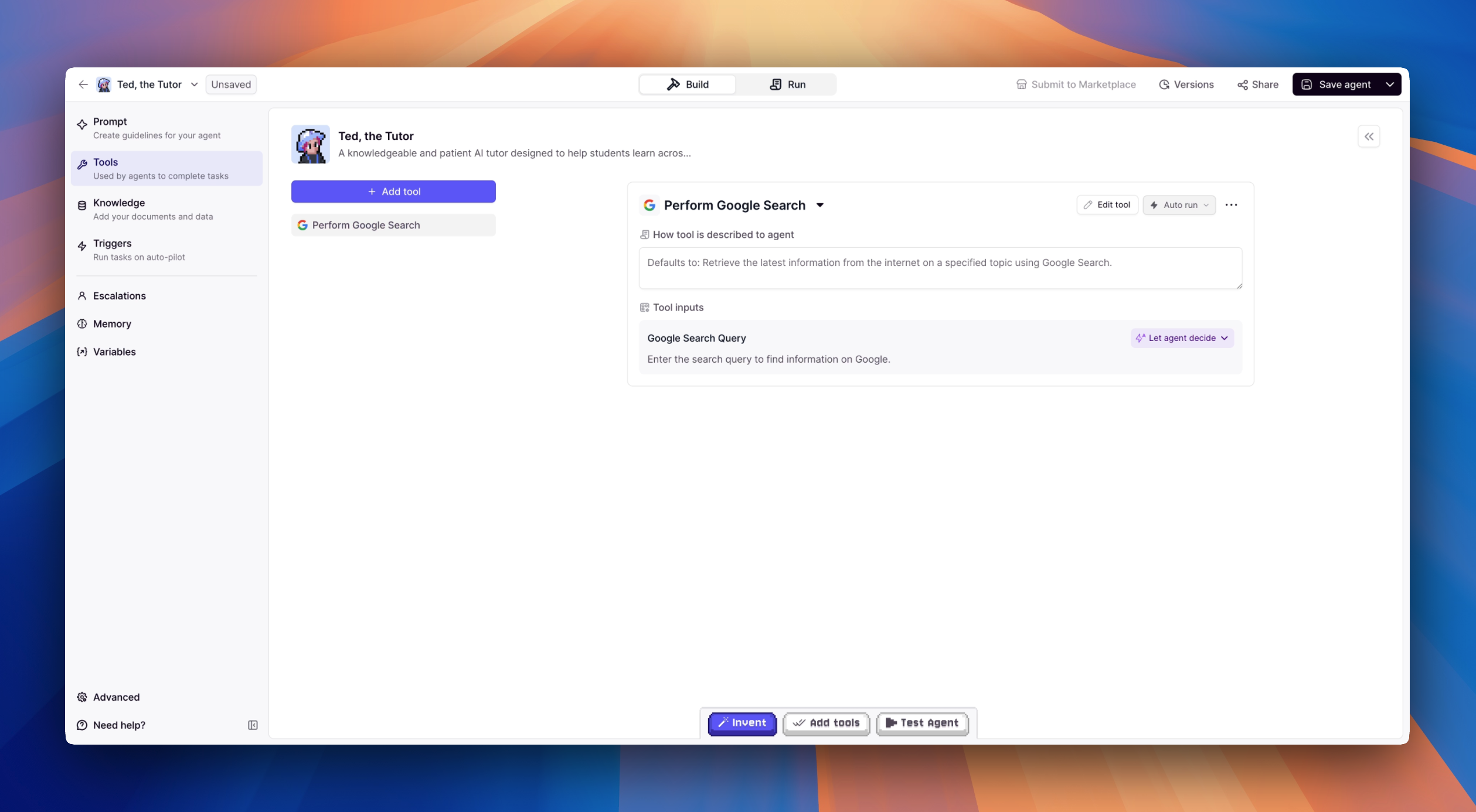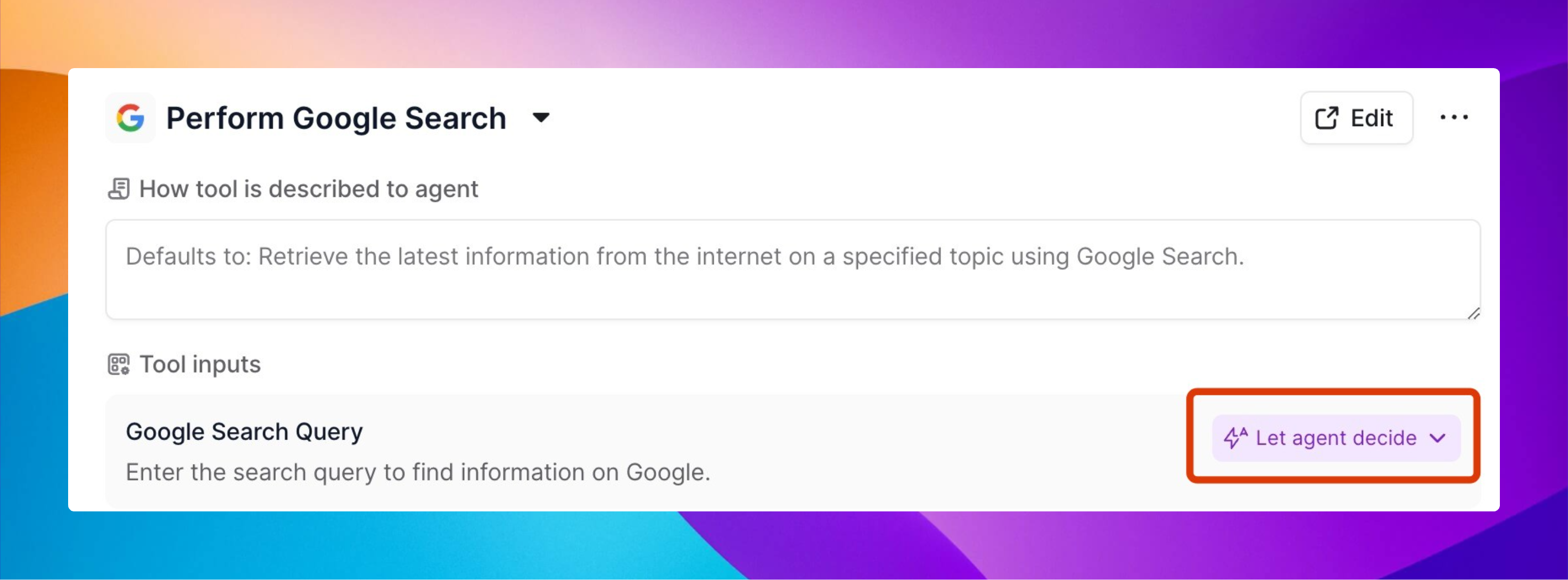Skip to main contentOverview
Tools enable your agent to go beyond simple conversation by performing actions such as searching the web, accessing databases, sending emails, or interacting with other systems. When properly configured, tools transform your agent from a conversational interface into a powerful digital assistant that can take meaningful actions on behalf of users.
 In the Agent Builder interface, navigate to the Tools section to begin enhancing your agent’s capabilities:
In the Agent Builder interface, navigate to the Tools section to begin enhancing your agent’s capabilities:
- Select from pre-built tool templates that cover common use cases
- Add custom tools you’ve created under the
Add new tool option
- Configure each tool’s usage settings based on your requirements
 When adding Tools to your Agents, you can choose from three different usage modes for your Inputs:
When adding Tools to your Agents, you can choose from three different usage modes for your Inputs:
Let agent decide
This balanced approach gives your agent the flexibility to determine how the Input is entered based on context. The Agent will use its judgement about what Inputs to give your Tools.
Best for: A mix of tool types where you want to get things up and running quickly.
Set manually
This option allows you to explicitly specify the Inputs for each Tool or action. You have full control over which settings are used for your tools.
Best for: Scenarios where strict oversight or compliance is needed, and you want to minimize any ambiguity in approval processes.
This option allows you to select the outputs from a previous Tool run by the Agent.
For optimal results, provide your agent with clear guidance about how and when to use its tools:
Core Instructions: Include specific directions about tool usage in your agent’s core instructions. For example:
- When to prioritize certain tools over others
- How to interpret and present tool results
- What circumstances warrant tool use versus simple conversation
- Start Simple: Begin with a few essential tools before adding more complex capabilities
- Test Thoroughly: Verify that each tool works as expected in various scenarios
- Monitor Usage: Review how your agent is using tools in real conversations to identify opportunities for improvement
- Refine Gradually: Adjust tool configurations and instructions based on actual usage patterns
- Combine Tools Strategically: Create powerful workflows by combining multiple tools in sequence
While the specific tools available depend on your implementation, common categories include:
-
Information Retrieval: Search engines, knowledge bases, document repositories
-
Communication: Email, messaging, notifications
-
Data Processing: Analysis, transformation, summarization
-
Integration: Connecting with external systems and APIs
-
Content Creation: Generating text, images, or other media
By thoughtfully selecting and configuring the right tools for your agent, you can create a powerful assistant that delivers exceptional value to your users through both conversation and action. 


